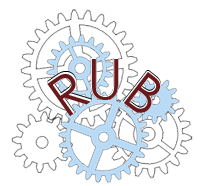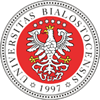Proszę używać tego identyfikatora do cytowań lub wstaw link do tej pozycji:
http://hdl.handle.net/11320/17778Pełny rekord metadanych
| Pole DC | Wartość | Język |
|---|---|---|
| dc.contributor.author | Mich, Włodzimierz | - |
| dc.date.accessioned | 2025-01-09T09:19:29Z | - |
| dc.date.available | 2025-01-09T09:19:29Z | - |
| dc.date.issued | 2024 | - |
| dc.identifier.citation | Czasopismo Naukowe Instytutu Studiów Kobiecych, nr 2(17), 2024, s. 31-49 | pl |
| dc.identifier.issn | 2451-3539 | - |
| dc.identifier.uri | http://hdl.handle.net/11320/17778 | - |
| dc.description.abstract | Tematem artykułu są agony kobiet znane z literatury średniowiecznej i akt sądowych. Autor dowodzi, iż były one formą agresji werbalnej. Używane w nich obelgi nie były zrytualizowane: miały dotknąć przeciwnika i pogorszyć jego reputację. Rozstrzygnięcie agonu zapadało często poza sferą werbalną. Odwołując się do schematu zaproponowanego przez Warda Parksa, można je uznać za bliskie heroic flyting. | pl |
| dc.description.abstract | The article focuses on women’s agones known from medieval litera ture and court records. The author proves that they were a form of verbal aggression. The insults used during them were not ritualized: they were intended to attack the opponent and damage his reputation. The outcome of the agone was often determined outside the verbal sphere. Referring to the pattern proposed by Ward Parks, agones can be considered close to heroic flyting. | pl |
| dc.language.iso | pl | pl |
| dc.publisher | Wydawnictwo HUMANICA Instytut Studiów Kobiecych | pl |
| dc.rights | Uznanie autorstwa-Na tych samych warunkach 4.0 Polska | - |
| dc.rights.uri | http://creativecommons.org/licenses/by-sa/4.0/pl/ | - |
| dc.subject | kobiety | pl |
| dc.subject | agony | pl |
| dc.subject | agresja | pl |
| dc.subject | flytings | pl |
| dc.subject | women | pl |
| dc.subject | agones | pl |
| dc.subject | aggression | pl |
| dc.title | Agony jako przejaw agresji werbalnej kobiet: szkic z europejskich tradycji oralnych | pl |
| dc.title.alternative | Agones as a Manifestation of Women’s Verbal Aggression: A Draft from European Oral Traditions | pl |
| dc.type | Article | pl |
| dc.rights.holder | Uznanie autorstwa-Na tych samych warunkach 4.0 Polska | pl |
| dc.identifier.doi | 10.15290/cnisk.2024.02.17.02 | - |
| dc.description.Email | wlodzimierzmich@autograf.pl | pl |
| dc.description.Biographicalnote | Włodzimierz Mich – emerytowany profesor Wydziału Politologii i Dziennikarstwa UMCS. Pierwotnie zajmował się badaniami myśli politycznej polskiego ruchu konserwatywnego i dziejami polskiego ziemiaństwa. Opublikował dwanaście monografii, w tym: Między integryzmem a liberalizmem. Polscy konserwatyści wobec kapitalizmu (Lublin 1996) i Ideologia polskiego ziemiaństwa 1918–1939 (Lublin 2000). Po 2010 r. przedmiotem jego dociekań stała się historia komunikacji społecznej. Efektem badań są czterotomowe Prolegomena do historii komunikacji (2014–2017) i dwa tomy Historii komunikacji społecznej poświęcone pierwotnej oralności: kulturze i egalitaryzmowi. | pl |
| dc.description.Affiliation | Uniwersytet Marii Curie-Skłodowskiej w Lublinie | pl |
| dc.description.references | Edda poetycka, przeł. Apolonia Załuska-Strömberg, (Wrocław et al.: Zakład Narodowy im. Ossolińskich, 1986). | pl |
| dc.description.references | Niedola Nibelungów, przeł. Ludomił German, (Wrocław: Wydawnictwo Wacław Bagiński i Synowie, 1994). | pl |
| dc.description.references | Saga rodu z Laxdalu, przełożyła Apolonia Załuska-Strömberg, (Poznań: Wydawnictwo Poznańskie, 1973). | pl |
| dc.description.references | Saga o Egilu, przeł. Apolonia Załuska-Strömberg, (Poznań: Wydawnictwo Poznańskie, 1974). | pl |
| dc.description.references | Saga o Njalu, przeł. Apolonia Załuska-Strömberg, (Poznań: Wydawnictwo Poznańskie, 1968). | pl |
| dc.description.references | Saxo Grammaticus. Gesta Danorum: kronika Danii, przeł. Jan Wołucki, (Sandomierz: Wydawnictwo Armoryka, 2014). | pl |
| dc.description.references | Táin czyli Uprowadzenie stad z Cuailnge, przeł. Ernest Bryll, Małgorzata Goraj, (Warszawa: Ludowa Spółdzielnia Wydawnicza, 1983). | pl |
| dc.description.references | Tremund, Karl. Saga o Nibelungach, przeł. Adam Sznaper, (Warszawa: Wydawnictwo Obrony Narodowej, 1989). | pl |
| dc.description.references | Ahearn, Laura M. Antropologia lingwistyczna. Wprowadzenie, przeł. Wojciech Usakiewicz, (Kraków: Wydawnictwo Uniwersytetu Jagiellońskiego, 2013). | pl |
| dc.description.references | Ahola, Joonas. „Outlaws, women and violence. In the social margins of saga literature”, w: Agneta Ney et al. (eds.), Á austrvega Saga and East Scandinavia: The 14th International Saga Conference Uppsala, 9th–15th August 2009, Vol. 1, (Gävle: Gävle University Press, 2009), 21–28. | pl |
| dc.description.references | Bax, Marcel. „Rules for ritual challenges: A speech convention among medieval knights”, Journal of Pragmatics, Vol. 5, 1981, 423–444. | pl |
| dc.description.references | Bax, Marcel. Padmos, Tineke. „Two types of verbal dueling in Old Icelandic: the interactional structure of the senna and the mann jafnaðr in Hárbarðsljóð”, Scandinavian Studies, Vol. 55, 1983, 149–174. | pl |
| dc.description.references | Bednarek, Bogusław. Epos europejski, (Wrocław: Wydawnictwo Uniwersytetu Wrocławskiego, 2001). | pl |
| dc.description.references | Boehm, Christopher. Moral Origins: The Evolution of Virtue, Altruism and Shame, (New York: Basic Books, 2012). | pl |
| dc.description.references | Borovsky, Zoe. „Never in Public. Women and Performance in Old Norse Literature”, Journal The Journal of American Folklore, Vol. 112, No. 443, 1999, 6–39. | pl |
| dc.description.references | Clover, Carol J. „Norse Flyting”, w: Joseph R. Strayer (ed.), Dictionary of the Middle Ages, Vol. 9, (New York: Charles Scribner’s Sons, 1987), 172–175. | pl |
| dc.description.references | Clover, Carol J. „The Germanic Context of the Unferþ Episode”, Speculum, Vol. 55, No. 3, 1980, 444–468. | pl |
| dc.description.references | Davidson, Ellis. „Insults and Riddles in the Edda Poems”, w: Robert J. Glendinning, Haraldur Bessason (eds.), Edda: A Collection of Essays, (Manitoba: University of Manitoba Press, 1985), 25–46. | pl |
| dc.description.references | Dunbar, Robin. Pchły, plotki a ewolucja języka, przeł. Tomasz Pańkowski, (Warszawa: Wydawnictwo Czarna Owca, 2009). | pl |
| dc.description.references | Güvendir, Emre. „Why are males inclined to use strong swear words more than females? An evolutionary explanation based on male intergroup aggressiveness”, Language Sciences, Vol. 50, 2015, 133–139. | pl |
| dc.description.references | Harris, Carissa M. Obscene Pedagogies: Transgressive Talk and Sexual Education in Late Medieval Britain, (Ithaca and London: Cornell University Press, 2018). | pl |
| dc.description.references | Harris, Joseph. “Speak Useful Words or Say Nothing”: Old Norse Studies by J. Harris, Susan E. Deskis, Thomas D. Hill (eds.), (Ithaca, N.Y.: Cornell University Library, 2008). | pl |
| dc.description.references | Hughes, Geoffrey. An Encyclopedia of Swearing, (Armonk, N.Y.: M.E. Sharpe Inc., 2006). | pl |
| dc.description.references | Huizinga, Johan. Homo ludens. Zabawa jako źródło kultury, przeł. Maria Kurecka, Witold Wirpsza, (Warszawa: Czytelnik, 1998). | pl |
| dc.description.references | Jucker, Andreas H. Taavitsainen, Irma. „Diachronic speech act analysis: Insults from flyting to flaming”, Journal of Historical Pragmatics, Vol. 1, 2000, 67–95. | pl |
| dc.description.references | Kulick, Don. „Anger, gender, language shift and politics of revelation in a Papua New Guinean Village”, Pragmatics, Vol. 2, No. 3, 1992, 281–296. | pl |
| dc.description.references | Labov, William. Language in the Inner City: Studies in the Black English Vernacular, (Philadelphia: University of Pennsylvania Press, 1972). | pl |
| dc.description.references | Labov, William. „Rules for ritual insults”, w: Thomas Kochman (ed.), Rappiri and styliri out: Communication in urban black America, (Champaign: University of Illinois Press, 1972), 265–314. | pl |
| dc.description.references | Locke, John L. Duels and Duets: Why do men and women talk so differently?, (Cambridge [etc.]: Cambridge University Press, 2011. | pl |
| dc.description.references | Locke, John L. Bagin, Barry. „Language and life history: A new perspective on the development and evolution of human language”, Behavioral and Brain Sciences, Vol. 29, 2006, 259–325. | pl |
| dc.description.references | McCreesh, Bernadine. „Overcoming Óðinn: the Conversion Episode in Njáls saga”, w: Agneta Ney et al. (eds.), Á austrvega Saga and East Scandinavia: The 14th International Saga Conference, Uppsala, 9th–15th August 2009, Vol. 2, (Gävle: Gävle University Press, 2009), 675–681. | pl |
| dc.description.references | Merry, Sally E. „Rethinking Gossip and Scandal”, w: David Black (ed.), Toward a General Theory of Social Control, Vol. 1: Funda mentals, (New York: Academic Press, 1984), 271–302. | pl |
| dc.description.references | Miller, William I. Bloodtaking and Peacemaking: Feud Law, and Society in Saga Iceland, (Chicago: University of Chicago Press, 1990). | pl |
| dc.description.references | Ong, Walter J. Fighting for Life. Contest, sexuality and consciousness, (New York: Cornell University Press, 1981). | pl |
| dc.description.references | Ong, Walter J. „Psychodynamika oralności”, w: Grzegorz Godlewski et al. (red.), Antropologia słowa. Zagadnienia i wybór tekstów, (Warszawa: Wydawnictwo Uniwersytetu Warszawskiego, 2004), 191–202. | pl |
| dc.description.references | Parks, Ward. „Flyting, Sounding, Debate: Three Verbal Contest Genres”, Poetics Today, Vol. 7, No. 3, 1986, 439–458. | pl |
| dc.description.references | Parks, Ward. Verbal Dueling in Heroic Narrative: the Homeric and Old English Traditions, (Princeton: Princeton University Press, 1990). | pl |
| dc.description.references | Sayers, William. „Serial Defamation in Two Medieval Tales: The Ice landic Ölkofra Þáttr and The Irish Scéla Mucce Meic Dathó”, Oral Tradition, Vol. 6, No. 1, 1991, 35–57. | pl |
| dc.description.references | Schlauch, Margaret. Stare sagi islandzkie, przeł. Piotr Niklewicz, (Warszawa: Wiedza Powszechna, 1976). | pl |
| dc.description.references | Turco, Jeffrey. „Gender, Violence, and the «Enigma» of Gísla saga”, Journal of English and Germanic Philology, Vol. 115, No. 3, 2016, 277–298. | pl |
| dc.description.references | Wald, Elijah. The Dozen: A History of Rap’s Mama, (New York: Oxford University Press, 2012). | pl |
| dc.description.references | Wickham, Chris. „Gossip and Resistance Among the Medieval Peas antry”, Past & Present, Vol. 160, No. 1, 1998, 3–24. | pl |
| dc.identifier.eissn | 2543-7011 | - |
| dc.description.issue | 2(17) | pl |
| dc.description.firstpage | 31 | pl |
| dc.description.lastpage | 49 | pl |
| dc.identifier.citation2 | Czasopismo Naukowe Instytutu Studiów Kobiecych | pl |
| dc.identifier.orcid | 0000-0001-7097-3121 | - |
| Występuje w kolekcji(ach): | Czasopismo Naukowe Instytutu Studiów Kobiecych, 2024, nr 2(17) | |
Pliki w tej pozycji:
| Plik | Opis | Rozmiar | Format | |
|---|---|---|---|---|
| CNISK_2_2024_W_Mich_Agony.pdf | 324,96 kB | Adobe PDF | Otwórz |
Pozycja ta dostępna jest na podstawie licencji Licencja Creative Commons CCL


